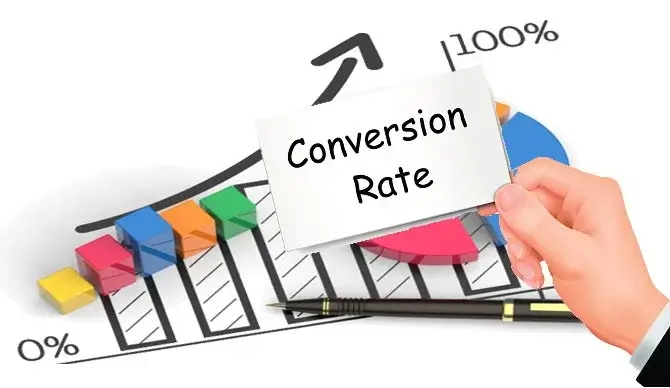
The ultimate goal of every consumer is to increase its Amazon ranking. Ignoring the fact that how easily exploitable it is, majority of the sellers have no clue about the Amazon delivers search results. It may also interest you to know that consumers search for products to purchase on Amazon three times more than they search on Google.
Enlighten yourself with some more interesting facts.
Introduction of Amazon’s Ranking Algorithm – A9

The name for Amazon Ranking Algorithm is A9. Let’s study more about the source from where this guide about ranking on Amazon generated.
Even before a customer begins to search, Amazon analyzes the data, observes past traffic patterns and indexes the text that describes each product in their catalogue. This is how A9 starts functioning and calculates the search results. As it is pretty much clear from the given statement, most of the work is done even before the customer touches the keyboard. A9 Algorithm delivers results once the consumer hits ‘enter’ to perform a search through a two-step process, a pretty simple one at its core:
- Firstly, from their massive ‘catalog’, they pull out the relevant results of product listings.
- Secondly, the given results are then sorted in an order that seems the most relevant and convenient for the users.
What Influences the A9 Amazon Ranking Algorithm?
- Conversion Rate: the ranking factors have a statistically relevant effect on conversion rates. Customer reviews, quality of images and pricing are some of the examples for conversion rate factors.
- Relevancy: Amazon gathers the results and decides how to list them. It includes the title and product description. It tells A9 whether to consider the product page for a given search term.
- Customer Satisfaction: Customer retention factors consist of seller feedback and order defect rate. Amazon knows how to make the customers happy and make the most money out of a single customer.
Top 23 Amazon Ranking Factors
Unlike Google, Amazon is very open about its ranking factors.
Conversion Rate Ranking Factors

-
Sales Rank
Sales rank is one of the most important ranking factors. Increased sales means higher Amazon rankings and higher Amazon rankings means increased sales. As vicious as it may sound, new sellers still have many ways to compete.
-
Customers Reviews
All the negative and positive aspects of your product hold a great importance, which makes customer reviews one of the most ranking factors. How well you respond to the reviews given by the users is also given great emphasis.
-
Answered Questions
Q&A’s listed at the product page is basically used for conversions. Answering Questions is one of those metrics which Amazon says they don’t track but the data they have access is of prime importance to them.
-
Image Size & Quality
For Amazon product listings, Amazon tightens up their quality policies and image size. Some categories don’t even display images that are 1000×1000 pixels or larger. Amazon offers its customers with hover-to-zoom feature which has, made them believe that it has a dramatic effect on conversion rates.
The quantity of images is not important. One big image which is informative is more than enough to make Amazon content. Not that multiple images won’t bring much conversions, it’s just that one single image immediately tapers off after the first image.
-
Price
Amazon uses pricing as one of the biggest ranking factors to determine predicted conversion rates. They are well aware that the customers tend to seek the best deals. Pricing is used as a major factor by Amazon in picking which product to show in the buy box.
-
Parent-child Products
Product listing (parent) and color or size variations (child) appear on the same listing as variations. To direct the consumers to a single product page, it is better to use Amazon’s built-in parent-child product function. It maximizes your customer reviews and keeps the customer on the same page hoping they’ll purchase the product.
-
Time on Page & Bounce Rate
It is easy for Amazon to keep a track of the detailed time on page and bounce rate stats by measuring the way a customer interacts with their website. The only way to determine that how much a customer is interested in buying your product is to examine the amount of time they invest on the listing page. A consumer performs a search, visits your page and after that goes back to the search results or clicks on a related product offer is known as a bounce rate.
-
Product Listing Completeness
Product listing mostly has to do with relevancy but it also has huge impact on the conversion rate. The product listing should be completely filled in order to maximize your chances of appearing at the top of product search.
Relevancy Ranking Factors

-
Title
Google wants an engaging title with the keyword provided and all Amazon cares about is keywords. Maximum number of keywords shall be generated in about 80 characters.
-
Features/Bullet Points
Features presented right below the pricing and product option as bullet points are an absolute must. Amazon allows products with bullet points only to be featured in the buy box. Bullet points are easily readable which means it won’t confuse the customers and risk hurting conversions.
-
Product Description
You get your product description when you expand the given features. A lot of effort goes into the engagement of the product description. You will be relevantly ranked even if the keyword appears once in Amazon.
-
Brand & Manufacturer Part
The brand and manufacturer is listed first in the product title. Always include a brand in the title because it enables the product for search filters and allows you to capture the customer base for a specific brand.
-
Specifications
Specifications are a part of your page where you list the technical and physical details of the product. This basically includes the size, shipping weight, color, publication date, etc.
-
Category & Sub-Category
Every search a consumer performs on Amazon will be limited once a customer has entered into a particular category. Put the product in the most relevant and narrow category possible when you set up a product listing.
-
Search Terms
You can specify search terms which you want to associate with your product. Amazon lists five different 50-character search term fields in which you can enter all the possible search terms you can think for your product.
-
Source Keyword
One of the hidden ways with which Amazon determines a listing’s relevance to a given product search is source keyword. It tracks every single minute of the customer’s activity on their website.
Customer Satisfaction Ranking Factors

-
Negative Seller Feedback
Amazon claims that it does not track the positive seller feedback, at least not for the sake of their product ranking algorithm. They track the negative seller feedback rates. Negative feedback is a known effect on product search results.
-
Order Processing Speed
One of the most effective way to make customers happy is with fast and accurate shipping. A seller who has received orders consistently and efficiently is ranked higher than others who’ve had complaints of slow shipping.
-
In-stock Rate
When a seller does not keep proper inventory or when an item is out of stock, it makes the customers switch to some other product. It is advisable to maintain top rankings both in A9’s product search results and in the product’s buy box. Amazon has noticed that sellers with low in-stock rates have higher refunds and cancellations, which is obviously bad for customer retention.
-
Perfect Order Percentage (POP)
High Perfect Order Percentage means high in-stock rate, accurate listings and immediate shipping. Amazon naturally ranks high POP sellers above low-POP ones.
-
Order Defect Rate (ODR)
The opposite metric of POP is ODR. When a customer makes a claim with an order is considered an order defect. Negative buyer feedback, A-to-Z Guarantee claim, any kind of shipment problem and credit card charge back are some of the examples of order defect.
-
Exit Rate
The amount of times a customer views your listing and leaves Amazon.com is known as the exit rate. Amazon takes ‘above average exit rate’ as a sign that you have a low-quality listing. High exit rate is because of the low in-stock rate and incomplete listings.
-
Packaging Options
Packaging options are something that Amazon has left it with the customers. It’s a great way to separate the listings from other similar products.
Summary
- Amazon’s main goal is Maximum RPC (Revenue Per Customer)
- Amazon Ranking Algorithm use product relevance, conversion rate, and customer satisfaction rate to rank products on Amazon
- Its best practice to fill maximum product information including keywords and other details
- It’s better to use FBA ( Fulfillment By Amazon) for customer satisfaction
- Make your customers happy and try to get maximum positive reviews
After all more sales means top ranking and top ranking means more sales.
So if you want to take professional Amazon listing services from Faith eCommerce Services to upload and manage your products on Amazon then contact us by visiting our business website https://www.faithecommerceservices.com









